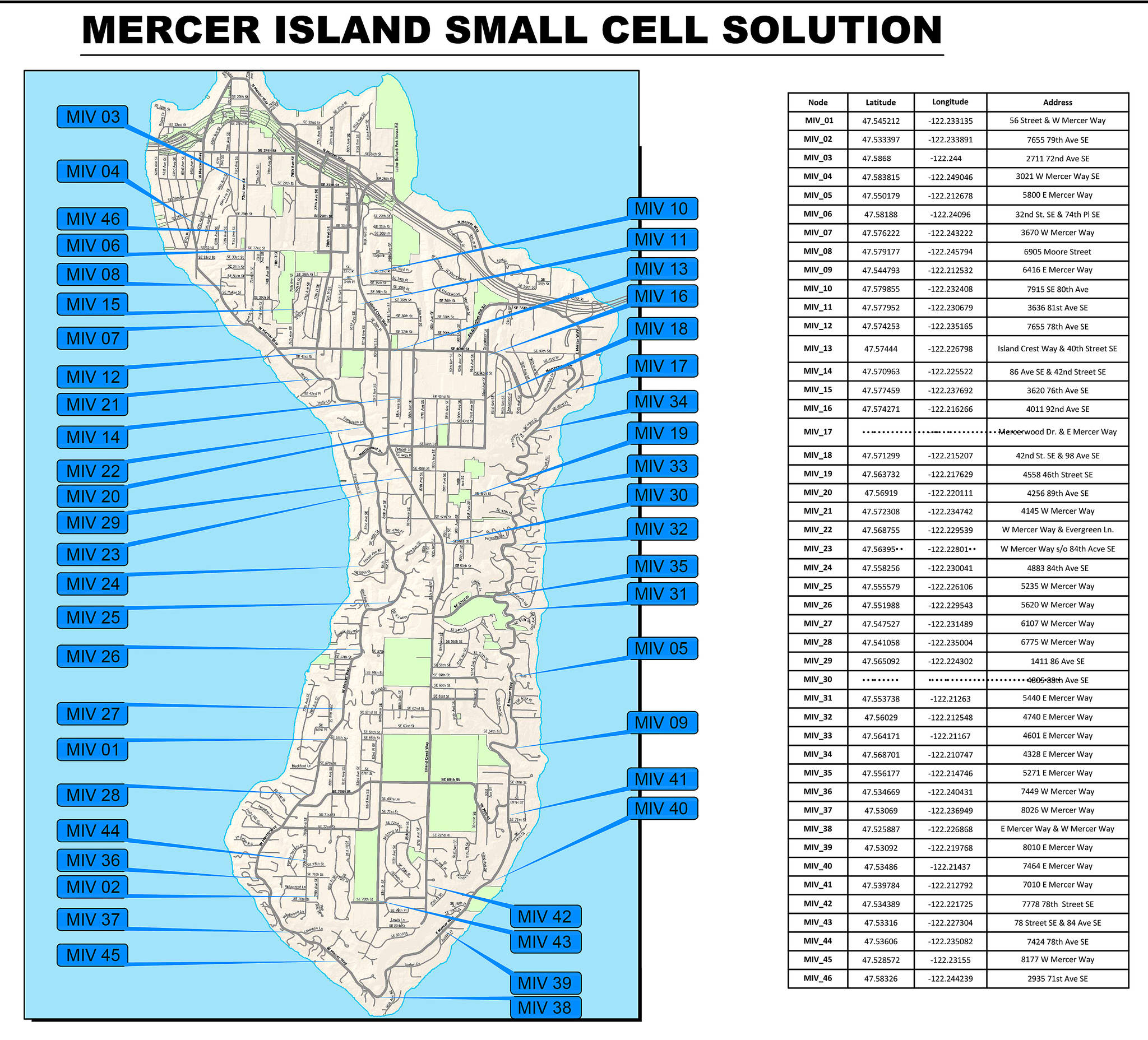A new technology has been sweeping across the Eastside in recent years and Mercer Island is about to see another wave of small cells from Verizon.
T-Mobile has already installed small cell antennas throughout the Island over the past year, after applying for permits in 2016, and locals will soon see 46 new small cells installed mostly on existing utility poles, courtesy of Verizon. The applications are under review to ensure compliance with the city’s recently adopted interim small cell rules.
Currently, the city of Mercer Island is accepting public comment and will consider comments submitted by email through the Let’s Talk Mercer Island website (https://letstalk.mercergov.org/) or by mail to 9611 SE 36th St., Mercer Island, WA 98040. According to Alison Van Gorp, an ombudsman for the city, in the first two days of public comment residents have presented concerns similar to those of the T-Mobile installations.
“Prior to those being installed, we received a lot of comments opposing the installation, and at that point there was a more comprehensive notice to the residents who live near proposed sites,” Van Gorp said.
The city will not be sending out mailers notifying locals this time around, opting instead to focus on public feedback through Let’s Talk Mercer Island. This is partially due to a recent Federal Communications Commission (FCC) ruling that limited how local municipality can control or inhibit small cell installations.
“Unfortunately due to the FCC rules the city couldn’t really do anything about it. People were saying ‘We don’t want this,’ and we’re saying, well, we have no power in this at all, so this time we’re not doing the mailings,” Van Gorp said.
Small cells are smaller cell phone antennas, designed to fit on utility poles or light posts and fill in the gaps left between the larger cell towers. The small cells currently support 4G or LTE networks and will eventually support 5G networks as the technology develops.
Larger cell towers are often sparse in residential areas.
The FCC order, which went into effect on Jan. 14, specifically limits the annual rent per pole to $270 and restricts the permit review time frame to 60 days for existing structures and 90 days for new structures. The order also defines the antenna size limitations without limiting the number of antennas allowed per pole, taking away any regulatory power of local municipalities.
The city has tried its best to mitigate aesthetic impacts, according to Van Gorp. Specifically, city workers have painted the small cells brown in an attempt to blend them into the pole. Despite the concern, there isn’t much more the city can do as wireless companies integrate small cells into the communication grid.
“Complaints about the noise and aesthetic are common, and I know some people are concerned about the electromagnetic radiation,” Van Gorp said. “But there’s nothing the city can do. We listen and we hear them, but there’s nothing we can do.”



